USS Scorpion (SSN-589) was a nuclear-powered submarine of the United States Navy that was lost at sea in May 1968. It was the second submarine named after the scorpion, a type of arachnid known for its venomous sting. The Scorpion was a Skipjack-class submarine and was commissioned in 1960. On May 22, 1968, while returning to its home port in Norfolk, Virginia, the Scorpion sank in the Atlantic Ocean, approximately 400 miles southwest of the Azores. All 99 crew members on board were lost, making it one of the deadliest submarine disasters in U. S. naval history.
The cause of the sinking remains a subject of speculation and investigation. The U. S. Navy conducted extensive searches and recovery efforts, and the wreck was located in October 1968 at a depth of about 10 000 feet. The investigation suggested that a combination of factors, including mechanical failure or possible flooding, may have led to the sinking. The loss of USS Scorpion raised concerns about submarine safety and operational protocols, leading to changes in how the Navy managed its submarine fleet. The incident remains a significant event in naval history and is often cited in discussions about submarine operations and safety.
The USS Scorpion
«The Navy has extensively investigated the loss of Scorpion through the initial court of inquiry and the 1970 and 1987 reviews by the Structural Analysis Group. Nothing in those investigations caused the Navy to change its conclusion that an unexplained catastrophic event occurred». – Excerpt from a Navy report.
It takes a special type of person to serve in a nation’s navy, especially on long voyages that separate men and women from their loved ones, and no service is both loved and hated as that aboard submarines, for very few people ever serve on them on a whim. For one thing, the psychological impact of being trapped for long periods underwater in tight, cramped quarters is more than many people can stand.
Also, submarine service is uncharacteristically hazardous; after all, if a surface vessel is sunk, the crew has a reasonable chance of escaping death in lifeboats or being rescued out of the water by another ship. Conversely, if a submarine is badly damaged while submerged, the crew’s chances of survival are at best remote.
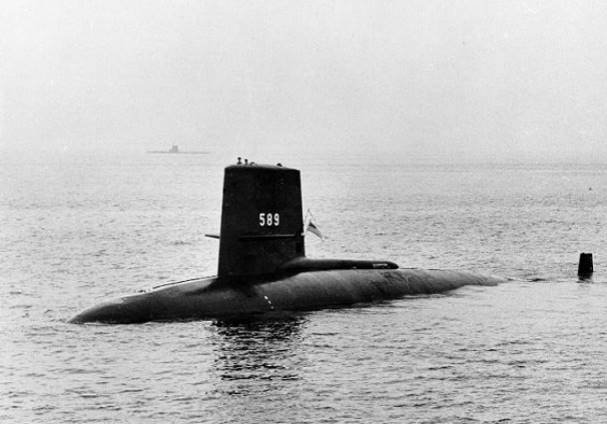
On the other hand, for those who choose to make the careers as submariners, there is no more beloved service. That is, one hopes, how it was for the 99 men who were serving on the USS Scorpion on May 22, 1968, the fateful day the submarine is believed to have sunk. It appears that the crew members died quickly, but however it happened, the grief experienced by their family members dragged on for decades, exacerbated both by the Navy’s lack of information about the submarine’s final moments and the government’s unwillingness to share what little knowledge it had.
It is easy in hindsight to criticize the military for its secrecy, but it must be remembered that the Scorpion disappeared at the height of the Cold War, and therefore, little could be said publicly about its fate. Coincidentally, 3 other nuclear submarines suffered mysterious sinkings the same year, and the Cold War adversaries were interested in locating them and gleaning any secrets or technology that they could from the other side’s bad luck. Indeed, it was only after the fall of the Soviet Union that the truth could be told, bringing closure to family members and a dark lesson in espionage to the American people.
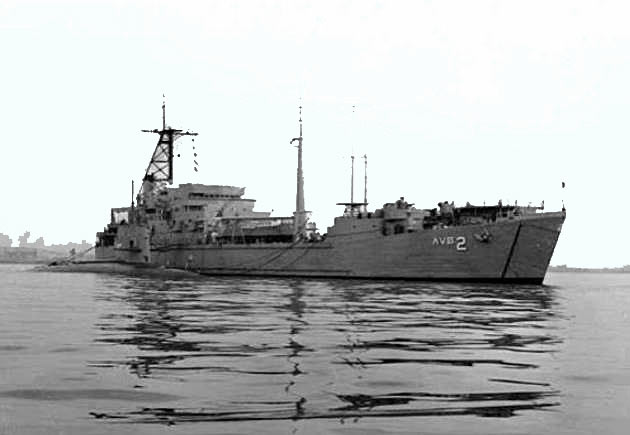
The Disappearance of the USS Scorpion: The History of the Mysterious Sinking of the American Nuclear Submarine looks at one of the Navy’s enduring mysteries. Along with pictures of important people, places, and events, you will learn about the USS Scorpion like never before.
1959-1968
The submarine’s insignia
In August 1958, it was just a little note, but it still made the front page of the Naugatuck Daily News: «The keel of another atomic submarine, USS Scorpion, was laid today at the Electric Boat yards of General Dynamics Corp. The 250-foot Scorpion is of Skipjack Class and will be a fast attack boat».
Another, slightly longer article appeared just over a year later when the Scorpion was officially launched in December 1959: «The atomic-powered whale-shaped Scorpion, a speedy attack submarine, plunges into the Thames River today for the first time. Colorful christening ceremonies were scheduled for the 252-foot vessel. Elizabeth S. Morrison of Arlington, Va., daughter of the late Cmdr. Maxmilian G. Schmidt, was to wield the champagne bottle. Schmidt was the last commander of the Scorpion of World War II, which was lost in action. The Scorpion is a sister ship of the USS Skipjack, the world’s fastest and most maneuverable known submarine».
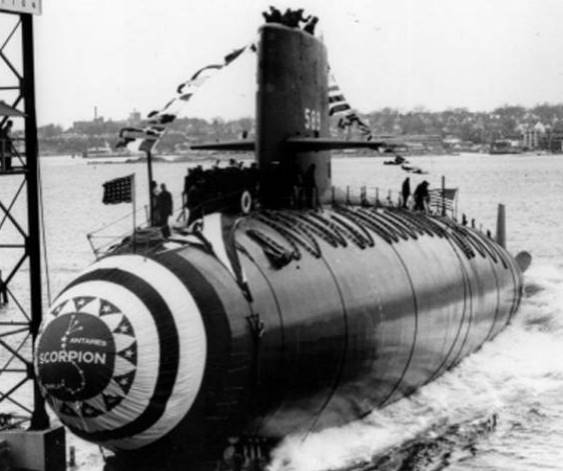
June 1960 brought more good news as the papers informed readers the Scorpion had proven seaworthy during its trials: «SCORPION COMPLETES TRIALS . . . Scorpion, the Navy’s newest atomic-powered submarine, plows through Long Island Sound to complete builders’ trials. Scorpion is a sister ship of the USS Skipjack, which the Navy says is the world’s fastest submarine».
The Scorpion soon took its place among America’s team of leaders in the Cold War nuclear race with the Russians, and on March 3, 1961, it was praised publicly in a wire service story which read, «Sen. Claiborne Pell said yesterday there is no ship anywhere in the world with the potential of the nuclear powered submarines of the U. S. Navy. He made this observation alter a seven-hour cruise on the USS Scorpion in the Narraganset Bay, Long Island Sound area. Pell said the seven hours were «fascinating» ones with every minute providing «more learning and interest». When asked his impression of the Scorpion as a deterrent, he said, «From the viewpoint of being a deterrent, there is no ship anywhere in the world, that has near the effectiveness…the silent, evasive potential». Cmdr. Norman V. Bessac, commanding officer of the Scorpion, put the ship through her paces for the visiting Washington party, which included members of the Atomic Energy Commission and seven senatorial administrative assistants in addition to Pell. The submarine made a dive off Brenton Reef Lightship. Just as the Scorpion’s mooring lines were being secured at the end of the cruise, a five-plane formation of submarine killing Grumman WF-2 Tracer aircraft peeled off in salute. They were units of Navy Carrier Airborne Early Warning Squadron 12, based at Quonset Point. Rear Adm. Benjamin E. Moore, commander at Quonset and Rear Adm. Lawrence R. Daspit, deputy commander of the Atlantic Fleet Submarine Force at New London, Conn., welcomed Senator Pell and his party at Quonset».
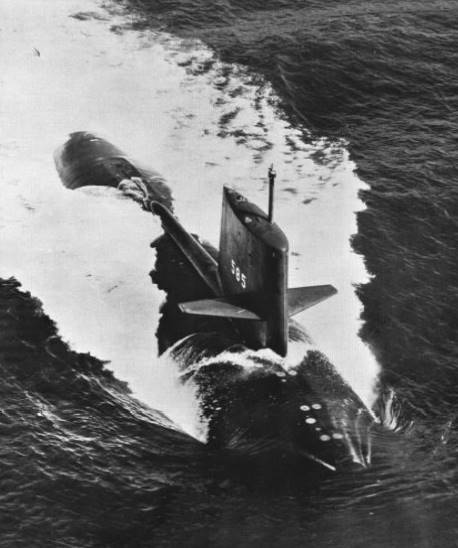
In fact, America’s nuclear submarine fleet was in many ways the darling of Cold War defenses, as there was something romantic about the life of a submariner, with their «run silent, run deep» philosophy. Far from the building conflict in Vietnam, they were seen by many as the nation’s protectors and were the beneficiaries of some interesting perks. In September 1965, the Journal Tahoe News Service described some of the leisurely activities aboard the sub: «Members of the crew of one of the Navy’s nuclear submarines, the USS Scorpion, soon will have plenty of playing cards to while away the hours while their vessel cruises underwater for days and months, as well as when it is cruising on the ocean’s surface or in port. This was assured Wednesday when the Tahoe-Douglas Chamber of Commerce arranged with Nevada South Shore casinos to donate cards used in the gaming rooms to be sent to the submarine, according to Mrs. Ruby C. Suverkrup, office manager of the chamber. Arrangements to supply the playing cards resulted from a letter sent the chamber by sailor R. P. Hughes, president of the Scorpion’s recreation committee».

On February 15, 1968, the Scorpion left Norfolk, bound for a three-month Mediterranean tour. The crew was thrilled, as the region featured some of the great beauty spots of world and the men could look forward to liberties along the Italian and Sicilian coasts. Upon arriving at its destination, the submarine participated in exercises with NATO and the U. S. Sixth Fleet. The «exercises», like many at that time in history, were designed not just to train the crew but to keep an eye on the Soviets.
However, as the crew pulled away for their new assignment, there was at least one man who was not thrilled to see the Scorpion launched; in fact, he was just thankful he was not going with her. Sherry Sontag and Christopher Drew, authors of Blind Man’s Bluff: The Untold Story of American Submarine Espionage, explained, «There, standing on the dock tossing the final mooring line to the crew as Scorpion departed, was Dan Rogers, an electrician’s mate who had risked his career by demanding to be transferred off the boat, writing to his captain, Lieutenant Commander Francis A. Slattery, that everyone on board was «in danger». The Navy had always portrayed the 252-foot-longsub as a gleaming showpiece, but Rogers said Scorpion was so overdue for a thorough overhaul that the crew had taken to calling her the «USS Scrap Iron». There were oil leaks in the hydraulic systems and seawater seeping in through the propeller shaft seals. Her emergency ballast systems weren’t working, and the Navy had restricted her depth to 300 feet, less than one-third of the operational depth of other boats of her class».
«There had also been a frightening incident three months earlier when Scorpion had vibrated so violently during high-speed maneuvers that she seemed to corkscrew through the water, sending huge pieces of equipment swaying on their rubber mountings. The cause was never diagnosed. Rogers and other crewmen feared that the problem could reappear at any time. … The bulk of the work on Scorpion…had been postponed due to tight budgets and the relentless pace of intelligence operations, which were growing rapidly toward a peak never before seen during the cold war. As she set out, Scorpion was one of only four of the Atlantic Fleet’s submarines that was still waiting to be refitted with … safety features».
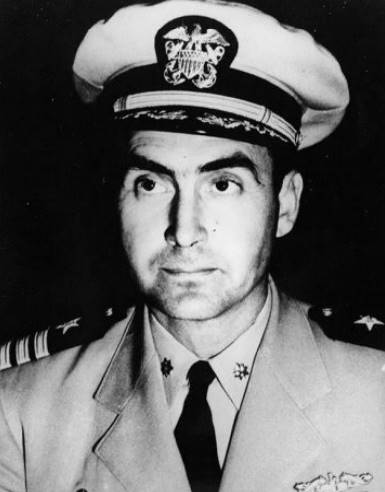
The tour was largely uneventful, and the crew headed home on May 17. The sub’s commander, Francis A. Slattery, radioed in on May 22 and informed Atlantic Submarine Force headquarters that they would arrive in Norfolk at 1 p.m. on Monday, May 28, just in time to spend at least part of Memorial Day with their families.
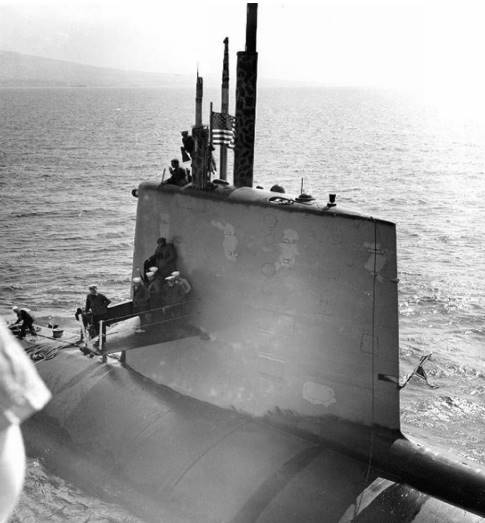
It would be the last confirmed transmission from the submarine.
The Scorpion Goes Missing
In late May, the families of the Scorpion’s crew were informed of their anticipated arrival time and braved nasty weather to travel to the naval base and take up their posts along the coastline, many armed with binoculars trained on the sea and looking for the first sign of the sub’s arrival. As they arrived in time and waited on the 28th, many made small talk and tried to assuage their nerves with small jokes, but as time passed with no sign of the submarine, the jokes turned to questions and the nerves became obvious. Finally, the first news of the Scorpion’s disappearance broke when the Associated Press announced, «The Navy reported the nuclear submarine USS Scorpion overdue in the Atlantic Monday night with 99 men aboard. The weather was described as «very, very bad». The submarine was returning from what was described as extended training operations in the Mediterranean. The $40 million vessel should have reported in about midday as it approached Norfolk, Va., the Pentagon said. No message was received. The last contact with the submarine came in a routine message stating her position, speed and course over a week ago, on May 21. The Pentagon said it is normal for a submarine making a submerged passage to observe radio silence for extended periods. Adm. Thomas H. Moorer, chief of naval operations, told newsmen at a hurriedly called news conference that the Scorpion was a few miles south of the Azores at the time of the last communication. Moorer indicated, however, he feels the submarine would have been nearer the United States at the time it encountered difficulty. What may have happened to the Scorpion was a mystery».
From the beginning, search efforts seemed to be doomed to failure. For one thing, they were hampered by the weather, as the article noted, «The submarine Shark, dispatched as part of the search reported surface waves of 15 to 22 feet. At one point Moorer suggested the Scorpion may have chosen to ride out severe weather by remaining submerged. He also suggested that in bad weather a message informing Norfolk that the Scorpion was being delayed could have been lost. Moorer acknowledged, however, that the submarine would have attempted to contact shore in event of a delay. If its radio communications had failed, the Scorpion could have sent other signals. «So far we have not received any» emergency messages, Moorer said in response to questions».
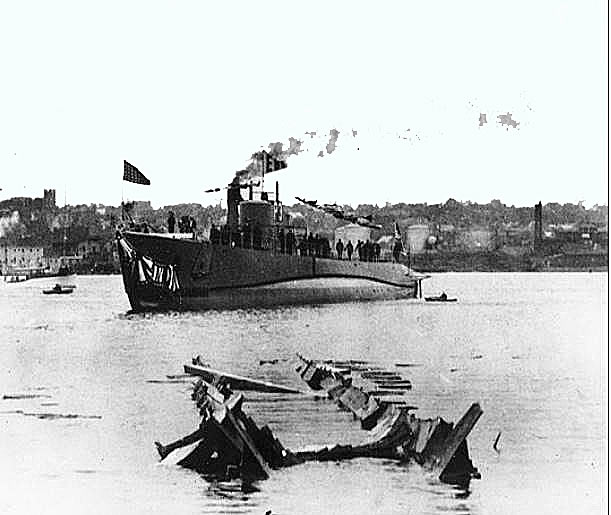
Of course, regardless of the official word, the Navy wasted no time or energy sending out forces to search for the lost craft, concerned not just for the 99 men aboard but also for the nuclear secrets the sub carried. The Associated Press provided details about the search party: «Six destroyers, two submarines and patrol aircraft have been thrown into a broad search for the vessel. The primary search zone at this point is the Atlantic area adjacent to Norfolk and extending along a 2 100-mile stretch covering the track the Scorpion would have followed from its last transmission. The Atlantic ranges to 3 000 fathoms deep in some points along the Scorpion’s route home, but she would have had to pass over a mid-ocean ridge only 1 000 fathoms at one point. Within about 55 miles of Norfolk the Scorpion probably would have begun approaching to surface at the edge of the continental shelf, which is generally around 600 feet deep at its lowest points. Moorer said that if the sub were disabled in shallow water, its crewmen could come up one by one. If it were resting on the continental shelf, a rescue bell could be lowered and affixed to the submarine to retrieve the men. But he acknowledged that at points beyond the continental shelf the Navy had no means of rescue. Moorer would not discuss whether the Scorpion carried nuclear weapons. As for the search, the admiral said he expects weather to improve today, enabling a broad search by antisubmarine warfare patrol planes which have the capability of detecting underwater vessels. Whatever happened probably occurred, he said, in the last 14 hours. «The weather may have caused her to slow and she may have put a message into the air that was not received», Moorer said. There were relatives waiting at Newport, he said, so it was decided to make known the Scorpion’s delay. «She was likely in my view to be closer to her destination than her last known position», Moorer said»».
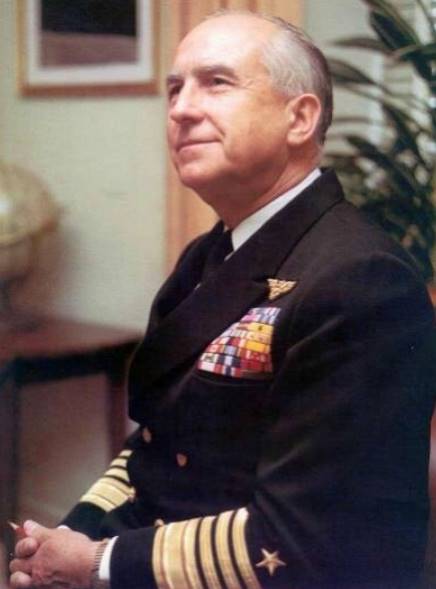
Meanwhile, news of the disaster spread slowly at first, as families were more focused on the dual events of early summer: graduations and weddings. However, by Tuesday afternoon, May 30, the entire nation was aware of the problem. More ominously, the Associated Press offered up troubling details: «The Navy reported today that an oil slick was spotted along the return course of the missing submarine Scorpion two days after the atomic sub’s last known communication. The sub and its 99 crewmen were to have reported to Norfolk, Va. at the end of a submerged Atlantic crossing Monday. Search ships have been ordered to the oil slick area to look for any surface evidence such as debris. But a Navy captain in charge of the massive Atlantic search effort from the Pentagon cautioned that: «We attach at this time no importance whatsover» to the sighting. Capt. John F. David told newsmen oil slicks are a routine sighting at sea. Nevertheless, David acknowledged at one point, «With the passage of time we are more apprehensive of what the possibilities are»».
At the same time, the article mentioned what had been done thus far to find the missing ship: «When the Scorpion failed to appear the Navy asked all ships in the Atlantic to check their records for any sightings or contacts with the Scorpion since she was last heard from about midnight May 21. The USS Monrovia, an attack transport… had something. «The quartermaster of the Monrovia in reviewing his log found that he had noted on 12:55 Greenwich time – 8:55 in the morning Washington time on May 23 – that the ship had passed an oil slick». This was about 1 200 to 1 400 miles almost due east of Norfolk, the Scorpion’s home base, and in an Atlantic area ranging to 9 000 feet deep – far below the level at which the Navy could hope to rescue men from a disabled sub. The sub failed to appear and a broad search was launched with at least 36 ships, planes and nearly 8 000 men. Navy men emphasized the search remained in the organization phase at midmorning with assigned ships and submarines proceeding to the search area along 600 – foot depths marking the beginning of the Atlantic’s continental shelf about 55 miles off Norfolk».
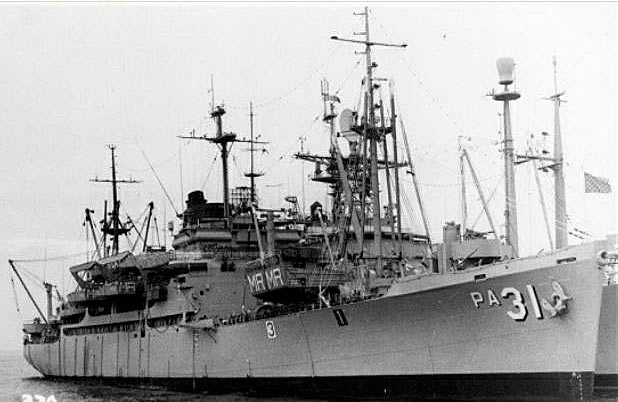
The article also explained that those on the lookout had a daunting task, searching along «a line reaching about 2 100 miles from Norfolk to a point just south of the Azores, almost due east, where the Scorpion sent a routine – and its last – message…».
Just hours later, there was more news, coming in the form of a United Press International: «A massive air-sea search for the missing USS Scorpion moved into its third day today with anxieties rapidly mounting over the fate of the nuclear submarine and her 99 men. By midday, 58 U. S. warships were strung out along the 2 100 – mile track the Scorpion was following from the Azores to Norfolk, Va., Navy Base, hoping to turn up a lead to her disappearance. All weather P2 and P3 sub hunter planes were back in the air at daybreak, joined by 10 S2 tracker planes from Norfolk. The only clues turned up so far – a mid-ocean oil slick, a floating «strange colored object», and a British ham radio operator’s report of a distress call – were being checked out for lack of any better leads. A crewman on the U. S. S. Hyades reported spotting the orange colored object today about 60 to 80 miles north of the spot where the oil slick was sighted six days ago. The Navy said, however, there appeared to be no connection between the object and the missing submarine. John Grayson of Barnoloswick, Yorkshire, told U. S. military authorities in England he intercepted a radio message Monday that «seemed to be a distress call from the Scorpion». He said the message came over the 2 1/2 meter band Monday morning, London lime, and read: «This is the Scorpion. We have a faulty condenser but are attempting to return to base». The Defense Department said «no similar report has been received by the Navy from any military or civilian radio operator. The report is being evaluated». The oil slick, reported to have been seen in mid-ocean May 23 by the merchant ship Monrovi along the track the Scorpion was following, was checked out by two Navy search vessels».
While the men on land were evaluating clues, other sailors risked life and limb to search for the missing sub through often dangerous weather. On May 29, the Associated Press report quoted some of the men involved in the search: «The two twin engined Navy P2 Neptune rescue planes lumbered to the end of the runway yesterday at Norfolk Naval Air Station, paused for tower clearance, and took off into a dark sky. It was miserable flying weather. But the two 11-member crews had other things in mind. They were searching for the overdue nuclear submarine Scorpion. «I wish we could find some survivors, some debris or anything. Just to end the uncertainty», said Lt. Richard Muti of Eamsey, N. J., the copilot of one of the Neptunes. He was interviewed by a representative of a news media pool who donned flying gear, to accompany the flight in its long, rectangular search pattern about – 35 miles east of Norfolk. The Neptunes shared the sky with 16 other airplanes, all looking for the Scorpion…. Lt. Nas Bailey, 29, of Clearwater, Fla., the navigator, said «There are a lot of dependents back in Norfolk. I know if I was down there, I would want someone looking for me». The only breaks in the monotonous search were provided by a submerged turtle, which had to be checked out with a flare, and a piece of driftwood. «Patrol aviation», Muti said, «is hours of sheer boredom interposed with moments of sheer terror». He said his plane and the others would be back in the air each day until the Scorpion is found or the search is ended».
Meanwhile, the families of the missing crew continued to wait, pray, and hope for the best, all while fearing the worst. One paper reported, ««We just hope and pray», said the Rev. Robert Martin, father of one of the crewmen aboard the missing nuclear submarine Scorpion. The words and thought were repeated time and again today in the home around the country where parents and wives kept vigil by television sets and telephones awaiting word on the tinman crew. Martin, a Methodist pastor of College Springs, Iowa, is the father of Tech. 2. C. Kenneth R. Martin. Even as he spoke yesterday, Navy officials indicated that hope for survival ebbed with each passing hour. «I don’t have much hope. I’m afraid to hope», said Barbara Foli, wife of PO Vemon M. J. Foli, in Norfolk, Va. «I’m prepared, and of course, I’ll take any hope that they give, but I have a feeling… I hope to God I’m wrongc», she said. «I pray to God I am». One father, retired Navy man James Bailey Jr., 40, who spent 17 years serving in submarines, said he was sure the Scorpion and his son, Radioman 3. C. Michael Bailey, 21, would come through, «… During my 17 years we ran into trouble a lot». Bailey said in Portsmouth, N. J I, «We used to be cut off all the time. I’m sure the sub is all right». Bailey’s wife, Alba, the missing crewman’s stepmother, lost her first husband in the 1963 sinking of the submarine Thresher off the New England coast».
As with most branches of the military, the submarine service was made up of young men in the prime of life, making the stories of their possible loss, and the impact it would have on their young families, even more heart – wrenching. The article listed some of the backgrounds of the crew members. Some of the missing men on the Scorpion were expectant:
- fathers, such as Electronics Tech l.C. Michael Lee McGuire;
- whose wife, Mary Ann of Virginia Beach, Va., is expecting their child in three weeks.
Another is Electrician Mate Daniel C. Peterson from Hartford, Conn., whose wife, Bonnie is expecting their third child immediately. She lives in Norfolk, Va. Other crewmen were due for discharge. «He was due to get out of the Navy the eighth day of June», said Mrs. Vallie B. Swafford of La Puente, Calif., mother of Seaman Appren. Michael D. Gibson. «We’re hoping for the best and preparing for the worst», said Vernon F. Stone, professor of architecture at Iowa State University at Ames and father of machinist Mate David E. Stone. «It’s not the waiting that is so difficult», said Mrs. Ray Englehart, mother of Electronics Technician 2. C. Richard P. Englehart, 26, in Shelbyville, III. «We’re sort of shocked. We have another son in Vietnam who just left recently», said Frank G Sturgill, father of Electrician’s Mate 2.C. John P. Sturgill of Clinton. Tenn. «Of course with both of them…»and his voice trailed off. «We think he’ll be home», said Walter Charles Knapp, of Claysville, Pa., of his son, Machinist Mate Dennis Charles Knapp. «We are just waiting and waiting – every time the telephone rings we run for it like mad». said Mrs. Fred H. McGuire of Tulsa, Okla., mother of crew member Michael Lee McGuire. «All we can do is wait and pray», said Mrs. Robert A. Seifert of Madison, Ohio. She said her son Phillip, 21, a fireman apprentice «wanted to go into the submarine service. We didn’t try to dissuade him – it is his life and he must do what he wants».
While the Scorpion was missing, the Navy was busy trying to prop up its image during a time when military operations were coming under increased public scrutiny, and in 1968, the press was still willing to help them. For instance, on the 29th, while extensive efforts were being made to locate the missing submarine, the Tucson Daily Citizen ran an encouraging piece by its editor, Paul A. McKalip, who wrote, «Last week I was in San Diego for a two-day cruise on and under the Pacific aboard a U. S. Navy submarine. It was a memorable experience. It aroused within me great pride in our Navy and inspired respect and admiration for the Navy’s submariners. This week, in Tucson and across the nation, the news headlines have focused on the saddening fact that a submarine homeward bound in the Atlantic is «overdue». The first uncritical hours of tardiness on Monday have stretched into two critical clays. Prospects for return or recovery of the USS Scorpion have to be considered dimming, even as one hopes for a miracle. …there is a span of deep Atlantic some 2 100 miles in length where the Scorpion could be lying helpless in the water, mortally wounded in the depths. Just as airplanes are known sometimes to suffer sudden, unexplainable disaster in the air, so it is possible that a submarine could suffer something like an internal explosion that would bring disaster in a matter of seconds. Running submerged, its power to communicate by radio would be limited at best and conceivably not possible at all. All that is to speculate on the worst possibilities. At best, if the Scorpion is disabled but too deep to communicate, the ability of its crew to survive can be measured in weeks and even months. The nuclear submarines especially can, and do, remain submerged for long periods. And even though signal rockets were released to the surface, who might there be to sight them in all that vastness?»
McKalip went on to entertain his readers with a brief recollection of what it was like to be on duty aboard a modern submarine, writing, «The Navy’s submarine service once was considered as hazardous as it was uncomfortable. Submariners of an earlier era in undersea warfare were encouraged and rewarded with substantial extra «hazardous duty» pay. They also had to be able to adjust to living conditions which earned those early subs the appropriate nickname of «pig boats». Neither circumstance is applicable today. There is still a premium on the pay scale, though much smaller, and it is now considered «incentive pay». In the roomy interiors of nuclear submarines such as the Scorpion there are normal living conditions for the full complement of officers and crewmen. The atmosphere inside the latest nuclear – operated submarines, whether they are running surfaced or submerged, is constantly purified and regenerated with oxygen and cooled by modern air conditioning. The men relax in thick foam rubber bunks. They are provided with tiled showers, stainless steel lavatories, an endless supply of hot water, daily movies, tape recorded music and a well-stocked library. All of these comforts are new in the nuclear boats, as compared to the diesel-operated subs which still make up the bulk of the Navy’s imposing submarine force».
For those recalling a similar loss some years earlier, McKalip had these encouraging words: «A boat like the missing Scorpion will displace some 5 200 tons of water, compared with only 1 800 tons displacement for the long, slender conventional boats. Tucsonians who frequent San Diego may have seen both types if they have visited the harbor area. Some undoubtedly have been aboard during a visitors day at the downtown pier. Some of the conventional-type boats on active duty were built during and following World War II, but they have been remodeled and improved immensely since those days. Gone are the common operational dangers which once gave Navy subs a grim image. In fact, when the USS Thresher went down off the East Coast five years ago – in April, 1963 – it was the first loss of life in a Navy submersible since World War II. The Thresher was a nuclear boat, just off the building ways. It went out on sea trials, made a dive and was never heard from again. If the worst proves true and the Scorpion is gone with its 99 men, thousands of other trained, skilled and dedicated submariners will continue to take their boats into the far waters of the Atlantic and Pacific on regular mission assignments and fleet operations. They were doing just that Monday, and yesterday and today, while the search for USS Scorpion went on».
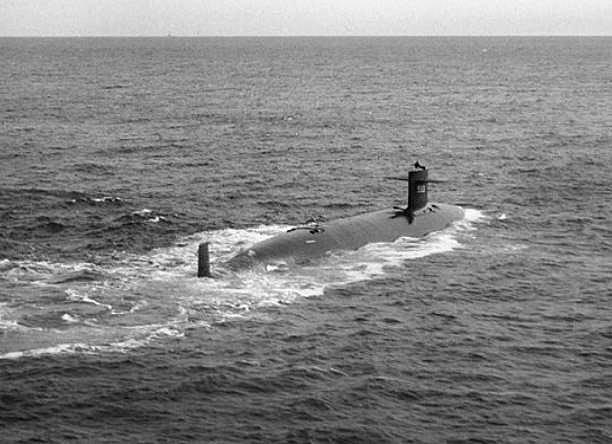
In order to understand the impact the loss of the Scorpion had on other submariners and Navy personnel, one has to understand the times and the men who sailed during them. In his memoir Tales of a Cold War Submariner, Dan Summitt explained how the specter of the Cold War loomed over the uncertainty of the Scorpion’s disappearance, and how everyone was on edge that it may have been sunk by the Soviets: «It is rather difficult to recall the constant tension of the Cold War days. It was a way of life to which we all became accustomed. Yet, always lurking in the back of our minds was the knowledge that we might one day have to launch our missiles and hope that we could survive the attack on its way from the Soviet Union. … One afternoon I learned that one of our nuclear powered attack submarines, the USS Scorpion (SSN-598), was overdue. It was a Submarine Squadron 6 ship, based there in Norfolk, returning from a long deployment to the Mediterranean. No reported change to its time of arrival had been received. Families and friends of the crew had been waiting on the dock for hours, their anxiety rising. Ships and aircraft operating in the area had been asked to report if they spotted the Scorpion, but no reports of sightings had yet been received. All of us openly hoped that there was some unusual reason for their delay which also prevented them from reporting and that we would soon hear from them. However, most of us silently feared that something disastrous had occurred. An air-sea search had been initiated, but darkness greatly inhibited our efforts. A special watch was established to receive and handle all incoming messages and information relative to the search. Everything reported was plotted on a large wall chart. I drew the midnight-to-four watch for several days. Despite the intense search, no solid clues had been found. We stood down after about a week and let the special search vessels take over. Everyone was saddened, not only for the crew but also for the families and close friends».
Giving Up Hope
Hope continued to fade more with each passing hour while Americans across the country snatched up newspapers in hopes of hearing more news. On May 30, the Associated Press seemingly offered a small light of hope: «The massive search for the atomic submarine Scorpion and her 99-man crew centered off the Virginia Capes today after receipt of a radio signal from a sender identifying itself as the missing craft. A patrol plane and six ships reported picking up Wednesday night a «very clear» signal. But a Navy spokesman said early today, «It could be a hoax». Cmdr. T. L. Ingraham, public affairs officer of the Atlantic Fleet’s’ submarine force also told a news conference, however: «The Navy still maintains hope». The submarine, missing since Monday, is the object of the greatest air-sea search ever mounted by the Navy – 10 000 men, 55 ships and 30 planes. The radio message was picked up when the patrol plane receiving it was 110 miles east of Norfolk. Search units were concentrated in an area stretching from 110 miles to more than 300 miles east of Norfolk. But no radio transmissions were reported. The sole message said: Any station this network. This is (and then gave the code name for the Scorpion.)» The Navy said the code name has been repeated numerous times in communications among the search force ships and planes. Ingraham said the Navy did not definitely believe the message came from the Scorpion. He added it could have come from a shore radio».
Navy personnel, knowing better than anyone else that the likelihood of finding survivors was small as time went on, became even more concerned about the effects that raised and dashed hopes could have on the families. «The Pentagon previously cautioned against over optimism that a dramatic development had occurred. Like Ingraham, the Pentagon said the message could have been a hoax. One of the Navy craft picking up the message took a bearing of 75 degrees on the signal. But because no other ship could get a second bearing there was no fix for point of transmission available. Ingraham said, ‘It is extremely doubtful that a transmission of this type could be originated by a submarine that may be submerged or bottomed in that vicinity the general area where the signal was heard. He said the Scorpion certainly would know a search was in progress for her and «she would be on the surface» transmitting. Ingraham reported the ocean in the general area where the signal was heard is 12 000 feet deep. This is well beyond the continental shelf, which extends some 70 to 80 miles seaward. However, officials have said the actual point of origin of the signal could have been a great distance from where the search craft were when they heard it. The Navy has said it would be optimistic about rescuing the Scorpion’s crew if the sub were found on the continental shelf, where depths reach about 650 feet».
Perhaps not surprisingly, as people had more time to contemplate the sub’s possible fate, there was increasing interest in how the men would be rescued if the boat was spotted. The AP article continued, «Present Navy rescue equipment – modifications of gear used 30 years ago – is rated to make saves to a depth of 850 feet. However, Navy rescue experts have said that as a practical matter the diving bell and its tender would have difficulty executing a rescue deeper than 300 feet because of difficulty in maintaining position above the submarine in the open sea. Experts have said that in order to communicate by radio a submarine must be close enough to the surface for its antenna to poke above the water. A submarine can receive messages if slightly submerged by means of a wire antenna trailing the sub If in trouble below the surface or disabled on the bottom, the sub could float to the surface a distress buoy carrying an antenna. Such a buoy-mounted system has somewhat limited range, Navy men said. If the Scorpion were located a few hundred feet down, the Navy probably would send a rescue vessel with the diving bell to the scene. The submarine would send to the surface a cable cached to a buoy with a telephone inside. This would permit the rescue of the submariners. The rescue ship would use the buoy cable to guide the big steel chamber down to the sub, where it would be mated with a hatch».
May 31 brought another small ray of hope, even as the Navy tried to tamp down speculation. A report from the Associated Press informed readers, «The Navy reported today locating what it described as a metallic shaped object the size of a submarine off Virginia, but a top admiral said chances were «almost nil» that it may be the USS Scorpion. Vice Admiral Arnold F. Schade, commander of the over-all search for the missing nuclear sub Scorpion and its crew of 99, said the vast sea hunt which has now been going on four full days has turned up nothing significant. The metallic object was detected about 70 miles from Cape Henry, Va., and Navy divers are trying to find it. «It is not one of the registered and known hulls», Schade said. Asked what he thought the chances were this could be the Scorpion, Schade said: «I think it is almost nil because if it was the Scorpion, at that depth I’m sure we would have heard something. He would have been able to indicate his presence». The object was described as about 250 feet long and 45 feet high, in 150 feet of water. The Scorpion is 252 feet long».
Schade also addressed the issue of the supposed distress call that was heard, as well as some of the cruel pranks sick minds were playing during this stressful time: «At the same time the admiral disclosed that the code name of the Scorpion was «Brandywine», and he said a check of the Atlantic area showed there were at least eight pleasure boats or fishing craft using that same name operating there. This, he indicated, suggested the Navy thinks the mysterious voice broadcast Wednesday night, using the name Brandywine may have come from one of those non-military vessels. Schade said the coast guard is trying to locate those vessels to determine if they have sent a message. While a sub on the bottom in the relatively shallow waters of the continental shelf might survive, its hull is not designed to withstand the pressures encountered at greater depths. While doggedly keeping up the hunt for the lost ship, officers at Atlantic Fleet Headquarters reported crank calls were plaguing families of the Scorpion’s crew. The callers pose as Navy officers and give the families false information on the conditions of their loved ones, they said. Some 60 of the Scorpion’s men had families in the Norfolk area. The ships diverted Thursday will sweep eastward from a point 400 miles out of Norfolk to the last known position of the Scorpion, the Navy said. … The Navy said it was abandoning a special search organized when a Navy patrol plane and six ships heard a voice transmission at 8:28 p.m. Wednesday. … The nuclear-powered submarine USS Lapon was the only craft to obtain a bearing on the signal, which was heard by the patrol plane when it was about 110 miles east of Norfolk. The Lapon heard the transmission while 300 nautical miles east of Norfolk. The possibility was raised Thursday that the transmission might have been a hoax or might have originated aboard one of the Navy’s own ships in the search area. The Navy said both possibilities are being investigated».
Any hopes that the craft found off the coast of Virginia was the missing sub were dashed the following day, when the Associated Press reported on June 1, «Navy divers inspected a sunken hulk off Cape Henry Friday and reported it is not the missing USS Scorpion. Eighteen divers were sent to check out the object detected in 180 feet of water 70 miles out and somewhat off the Atlantic course the missing submarine and its crew of 99 should have been on. Even before they reported back, Vice Adm. Arnold F. Schade told newsmen the chances of it being the Scorpion were «almost nil». Schade said the submarine Pargo detected the sunken metallic object Thursday but there was «no sound, no noise, no sign of life». When divers from the submarine rescue ship Sunbird reached the hulk, they found it probably was a World War II submarine, possibly German. For one thing they said it had a gun mount located forward of the conning lower. The Scorpion’s hull was barren of any such device. Schade said nothing definite has turned up in the five-day-old search for the missing atomic submarine. The commander of the overall search said the number of U. S. ships scouring the Atlantic has been cut, from more than 55 to 22, plus a French submarine. Schade termed this a «realistic reorientation» and indicated if nothing promising turns up in ten days the size of the search fleet will be further reduced. The major focus of the search is shifting far out toward the Azores in an area of shallow «sea mounds» where the Scorpion might have been grounded. This is in the same locale from where it sent a final routine message May 21. A new search is centered around the Cruiser Banks – as shallow as 100 feet – and the Irving Banks 360 miles south of the Azores. The underwater ridges are within 30 miles of the Scorpion’s projected course toward Norfolk. Meanwhile the Navy, Coast Guard and Federal Communications Commission continued checking out the mysterious voice broadcast that was picked up Wednesday using the Scorpion’s code name «Brandywine». From about 100 miles eastward a group of destroyers followed an ocean path the Scorpion would have taken. These were spaced about 12 hours ahead of a follow-up group of submarines».
June 2nd brought no encouragement to either the families or the waiting nation; at a time when Americans who were facing ever increasing losses in Vietnam needed hope, none was forthcoming. At the same time, some were able to find solace in trying to help, as noted by the Associated Press: «The Navy said Saturday the submarine rescue ship Kittiwake and the nuclear submarine Gato have begun searching near the Azores for the missing nuclear submarine Scorpion and her crew of 99. They will be joined by Navy salvage ships Preserver and Hoist off the Cruiser and Irving Banks, 360 miles south of San Miguel Island in the Azores, on Sunday and Monday, respectively. … Her projected course would have taken her within 30 miles of the Cruiser and Irving Banks, which are underwater ridges. As hope for the missing submarined dimmed almost to the vanishing point, the Joint Congressional Committee on Atomic Energy announced it had started an investigation into the Scorpion’s disappearance. The committee sent a staff expert from Washington to Norfolk headquarters for the search to gather information on what might have caused the Scorpion to fail to complete her mission, an aide said. … Atlantic Fleet spokesmen said Saturday that Deep Diver, a miniature submarine with four crewmen and some degree of maneuverability, will join the Kittiwake and the Gato off the Azores Sunday».
Even as so many families’ hopes were dimming, one’s prayers were answered, albeit in a way they did not anticipated. The Sunday Times out of Salisbury, Maryland, explained, «A Worcester County couple was greatly relieved today after receiving definite word that their son, who had been assigned to the missing USS Scorpion, was actually aboard the submarine Skipjack. … David W. Gault, 24, …who is serving his second enlistment in the Navy, was assigned in February to the Scorpion. Mrs. Gaul told the Sunday Times that after talking to her daughter-in- law in Norfolk Friday sight, she was relieved to learn that her son had been reassigned to the USS Skipjack. Mrs. Gault said her son was in Boston at the time and was unable to meet the Scorpion in Norfolk when she loft Feb. for the Mediterranean. «Friends have been calling me on the telephone all week. … They wanted to know if David was aboard the Scorpion. I didn’t think he was aboard her». she said with tears in her eyes, «But I couldn’t be sure. After I called Beverly, I found out that he didn’t make it to Norfolk in time to go out on the Scorpion. … But I’m so sorry for the families of those 99 men». Gault is rated as a torpedoman first class. … Gault’s work on the submarine is secret and the whereabouts of the USS Skipjack is unknown even to his wife, his mother said. Gault left Norfolk on the Skipjack on May 13 and is due back in the middle of July, according to his wife. While talking to her mother-in-law, the sailor’s wife said she had received a letter from him – a few days ago. He said in the letter that a radio operator had been transferred from the Scorpion to the Skipjack in the Mediterranean. Mrs. Gault didn’t know whether or not her husband’s submarine was engaged in the search for the missing Scorpion or not».
June 3rd saw the stories surrounding the missing submarine disappear from the front pages, as even the Associated Press had nothing new to report, but on June 4th, a short Associated Press article appeared on the insides pages of some of the nation’s papers: «Hope for the 99 men aboard the USS Scorpion dwindled Monday as the search for the missing nuclear submarine entered its eighth day. The Navy said 22 ships and 27 airplanes are taking part in the search…. «There are no significant developments». Atlantic Fleet Headquarters announced Monday. At 3 p.m. Monday five destroyers, trailed by five submarines, were 1 700 miles east of Norfolk, steaming eastward along the Scorpion’s projected track. At Terceira in the Azores the salvage ships Preserver and Hoist took aboard a miniature submarine that carries four men, is equipped with underwater search gear and can operate to a depth of 1 400 feet. Also loaded aboard the ships was a deep diving platform called the Mark 4, which can be lowered by winch to a depth of 1 000 feet, where divers can leave and return to its chamber. The Mark 4 and the miniature submarine would be used only if the search for the Scorpion should be narrowed to «a specific locality», Fleet Headquarters said».
It seemed obvious to anyone reading this most recent report that the Navy was preparing the nation for the worst, and in the same vein, the Navy was also preparing to receive an onslaught of questions about how and why the submarine was lost. There were two groups investigating the Scorpion. One looked near the Azores; this team was searching for underwater signals perhaps linked to the Scorpion. A second team in Norfolk aimed to get thoroughly examine all evidence and determine how the Scorpion went missing.
Before an announcement could be made, an even more shocking tragedy caught the nation’s attention when, just after midnight on June 5, presidential candidate Robert F. Kennedy was shot after giving a victory speech following his win in California’s primary. While the families of the men serving on the Scorpion waited and prayed, the Kennedy family watched the life ebb out of their husband, father and son.
On June 6, the headlines across the nation announced Kennedy’s death, while a few carried another story «below the fold»: «Navy Reveals Leak in USS Scorpion» The United Press International went on to report, «The nuclear submarine Scorpion set out on its doomed homeward voyage across the Atlantic with a leak in the propeller shaft that was letting in seven gallons of water a minute, a Navy court of inquiry was told today. The leak was not considered «significant» and the Scorpion was considered safe within its prescribed, secret depth limit, the court was told. The sub, lost with 99 men aboard, was to have been dry-docked for repairs after it got to Norfolk. … With no hope of finding the crew alive, the Navy today ordered the U. S. flag flown at half-staff at its installations and on its ships around the world «in honor of the gallant officers and men lost while serving their country in the USS Scorpion». Capt. C. N. Mitchell, deputy chief of staff for the Atlantic submarine fleet, said the leaking valve around the shaft was one of several repairs needed but said none was considered a safety hazard. The leak in the forward valve around the shaft was «over what it should be but was not what you would call significant», Mitchell testified. There were two backup valves for use if needed, he said. Mitchell said the Navy had not been able to make all safety improvements recommended after the loss of another nuclear submarine, the Thresher, in 1963 but had made all safety alterations on the Scorpion needed for its prescribed depth. The Scorpion, commissioned in 1960, was one of a number of nuclear subs lacking improvements recommended in hull construction as a result of the Thresher disaster, Mitchell said. But the Scorpion’s hull was considered in better condition than some others and the secret prescribed depth was set greater than pre-Thresher submarines, Mitchell said».
As the families struggled to accept the loss of their loved ones, they also came to the slow realization that their husbands, fathers, sons and brothers might have been lost unnecessarily. The article continued, «The sub may have been the victim of inaccurate charts. This was the theory developed at a formal inquiry here by Cmdr. George R. Parish Wednesday as Navy officials in Washington sorrowfully removed the Scorpion from the «missing» list and pronounced it «lost in the depths of the Atlantic». «With these harsh, unbending facts», Adm. Thomas H. Moorer, chief of naval operations, said of the fruitless 11-day search for the sub, «I can only ask that you join me in paying tribute to the men of the Scorpion, to their families and to their service». Navy officials were joining families and friends of the crewmembers in a memorial service late today at a chapel here on the Norfolk Naval Base. The sea and air search continued despite the ship’s listing as lost. Cmdr. Parish, a Norfolk operations officer, pictured the Scorpion as being off course in an area of inaccurately charted undersea mountains south of the Azores when last heard from. That was May 21 when the Scorpion had just begun a «routine» Atlantic crossing following Mediterranean naval maneuvers. Parish testified that on that date, while near surfaced at periscope depth for a three-hour radio message exchange, the Scorpion reported itself 27 miles off course and 40 miles behind schedule».
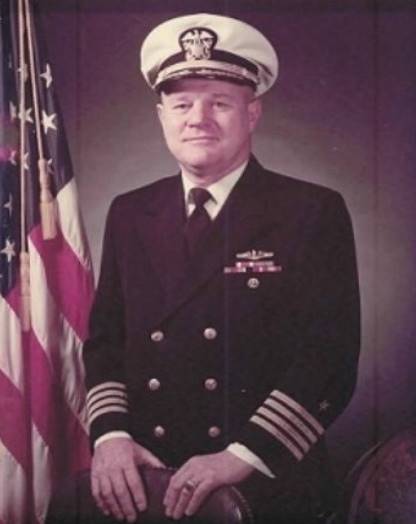
The news of the leak soon made its way around the world to other military personnel in an article carried in the June 7 Stars and Stripes, but that article also emphasized that the potentially dangerous matter had been dealt with: «The Navy Public Affairs Office here later issued a clarifying statement saying the leak had been reported and repaired before the Scorpion left Norfolk last February for Mediterranean maneuvers. It was returning from the Mediterranean when it vanished. With no hope of finding the crew alive, the Navy Thursday ordered the U.S. flag flown at half-staff at its installations and on its ships around the world «in honor of the gallant officers and men lost while serving their country in the USS Scorpion»».
One the things that made the grief of the families especially hard to bear was that it was almost completely overshadowed by the nation’s mourning of Kennedy. Under normal circumstances, the loss of 99 American seamen would have been top news, but in June 1968, it was quickly relegated to barely a footnote. On June 8, Margaret Cooper complained in a letter to the editor of the Newport (Rhode Island) Daily News, «As this country and the world grieve the tragic loss of Sen. Kennedy, there are 99 forgotten families suffering with their own loss. An item on page-11 of Thursday night’s Daily News noted that the Navy has declared the USS Scorpion lost at sea. While the news, TV and radio are giving a minute by minute account of the Kennedy tragedy, these 99 men have been put to rest in an unknown corner of the Atlantic. They were killed by unknown causes. Their coffin is shrouded with restless waves. The only visitors to their graveside are the fish. Submarine duty is called the Silent Service. And those 99 have exemplified this meaning. Silently they volunteered to leave their homes and families. Silently they slipped out to sea. Silently they were lost, and silently they rest in the hands of God who is the only one who knows where their bodies lie. Somewhere in this country there are unknown mothers and fathers mourn the loss of their unknown sons. There are unknown sweethearts and wives who will never be embraced by their loved ones again. And there are the unknown children who keep asking, «When is my daddy coming home?» It’s good to weep for Sen. Kennedy, but let’s not forget these brave men who gave their lives just as valiantly. If Sen. Kennedy could return to earth for just one minute, I am sure it would be to pay his last respects to these forgotten men».
Theories Regarding What Happened
With all hope of finding the men alive gone, the Navy began to turn its full attention to figuring out just what went wrong. One question raised concerned the crew itself, and whether or not there were enough men with sufficient training to man the vessel. A June 9 Associated Press story reported on this point that a «naval personnel officer testified Saturday the lost nuclear submarine Scorpion «was well manned». Seventy per cent of the Scorpion’s enlisted crewmen were qualified submariners, Lt. Cmdr. Thomas M. Hopper told a Navy Court of Inquiry investigating the loss of the submarine last month on her return cruise from the Mediterranean. Hopper said 54 per cent of the Scorpion’s enlisted men had, been aboard more than one year. Capt. Wallace Greene, commander of the Submarine Division, 62, of which the Scorpion was a unit, said Friday she was well qualified for Mediterranean deployment and manned by a crew happy at the prospect of the deployment. Greene also revealed that the Scorpion was to execute a secret assignment on her submerged voyage from the Mediterranean to her home port of Norfolk».
Two days later, the United Press International added, «The Navy turned today to the former second-in-command of the ill-fated USS Scorpion in its search for some clue to the fate of the nuclear submarine and its 99-man crew. The navy Court of Inquiry convened to investigate the Scorpion’s loss called in Lt. Commander R. R. Fountain, her former executive officer, to testify on his service aboard the eight-year-old sub. Fountain was the first witness called as the seven-man court under Vice Adm. Bernard L. Austin, went into its sixth day of hearings on the disappearance of the Scorpion…»
While one team of investigators met on dry land, another continued to brave the waters of the Atlantic looking for any clues as to where and why the sub was lost. From time to time, rumors would surface that something had been found, but these were always quickly denied. For instance, on July 20, the Associated Press reported, «A report the lost nuclear submarine Scorpion had been located by search vessels in Atlantic waters 10 times her «crush depth» brought a prompt denial Friday from the U. S. Navy. But sources at the Pentagon and at Atlantic Fleet headquarters here said the search was being concentrated on the «highly suspect» area, 450 miles south-southwest of the Azores, by ships equipped with underwater cameras and sonar scanning devices to check the ocean bottom. Science Writer William Hines of the World Book Science Service promoted the Navy reaction with a copyrighted story saying Navy search vessels had found the Scorpion and made underwater pictures. But Hines story added, the Navy wasn’t expected to make any announcement until it had a picture it could release without disclosing any secrets of submarine construction limes stop, appeared in the Chicago Daily News, and taped excerpts were broadcast by the Westinghouse Broadcasting Service. «We haven’t found her», was the initial word from the Navy on the latest report on the submarine…. The search by the oceanographic ship Mizar, the surveying ship Bowditch and the submarine rescue vessel Sunbird is concentrating on an area where the water averages about 12 000 feet in depth. Reportedly the Scorpion’s depth limit was 1 200 feet, but the official depth limit is a Navy secret. A Navy spokesman here said ‘no photographs have been taken of any debris associated with Scorpion. No debris associated with any submarine has been found at any time during the search…».
In reference to the first few months of the search, Ed Offley observed, «By mid-August, the court had scoured the submarine’s operational and administrative history, reviewed detailed records of its two shipyard overhaul periods since joining the fleet in 1960, examined what records were available on the Mediterranean deployment, and received updates on Mizar’s ongoing «technical» search in the eastern Atlantic… Two months later came stunning news: On October 30, 1968, the navy announced that Mizar had found the wreckage of Scorpion. A towed sled gliding fifteen feet above the ocean floor at the end of a three-mile cable had photographed the sub’s broken hull».
Finally, in late October, about 5 months after the submarine’s disappearance, the wreckage of the USS Scorpion was located. On October 31, the Associated Press reported, «The Navy announced today that portions of the lost nuclear submarine Scorpion have been located, more than 10 000 feet deep in the Atlantic. Adm. Thomas H. Moorer, chief of naval operations, announced that «objects identified as portions of the hull of the submarine USS Scorpion have been located about 400 miles southwest of the Azores in more than 10 000 feet of water». The discovery, reported by a Navy oceanographic research ship Wednesday night, culminates a search of more than five months…. Although there have been periodic reports that the general location of the remains of the Scorpion was known, Moorer’s announcement was the first word that the resting place had been found. The 10 000 plus foot depth where the hull pieces were located is far below the «crush depth» of the submarine, which was reported able to operate only as far down as about 1 200 feet. The research ship Mizar reported that the Scorpion’s location «has been confirmed by means of remotely controlled underwater photography», Moorer’s announcement said. The Mizar and another research vessel, the Bowditch, using underwater sensors and cameras, have for months been scanning the ocean bottom in the general area where the find was made Wednesday. Last July, this was called a «highly suspect» area. The Navy said the Mizar is remaining on the scene «in an attempt to locate and photograph additional portions of tine Scorpion’s hull». After that, the Navy said, the research vessel will return to port and photographs will be flown to Washington and Norfolk for a detailed analysis. «Present information is considered fragmentary and consists of on-scene interpretation of Initial photography», the Navy said. In light of the discovery, a seven-main Navy court of inquiry will be reconvened at Atlantic Fleet headquarters in Norfolk. «It is hoped that new evidence will enable the Navy to ascertain the cause of the loss» Moorer said. The inquiry court was convened first on June 4. It has prepared a report, not yet released, which was understood to have made no specific judgment on what had happened to the submarine».
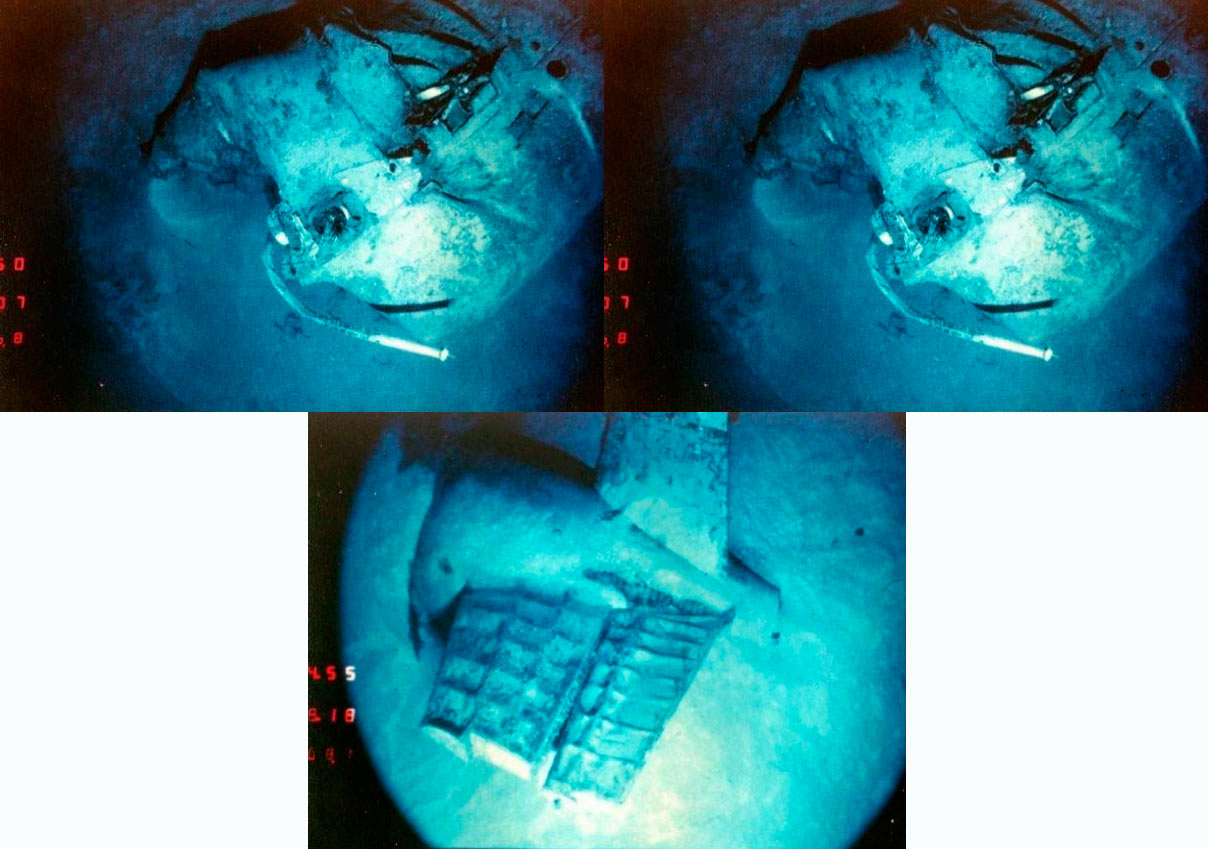
With the information made available by the search team, the Court of Inquiry was finally able to complete its work, and in January 1969, the United Press International reported, «Rep. Thomas J. Meskill, R-Conn., has been informed that the findings of the court of inquiry that probed the loss of the USS Scorpion and its 90-man crew will be released soon. Rear Adm. D.D. chapman, acting judge advocate, told Meskill In a letter Friday that his office is «now conducting a review of the record of proceedings of the court of inquiry into the loss of the Scorpion». Chapman said the kin of the 99 men and officers would be sent the findings and that Meskill would also receive a copy of the report».
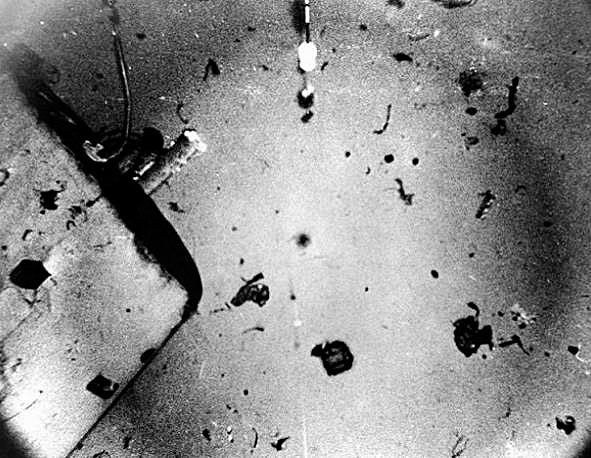
However, many noted that the report left much to be desired. The reported stated «The certain cause of the loss of Scorpion cannot be ascertained by any evidence now available». Numerous causes were not ruled out.
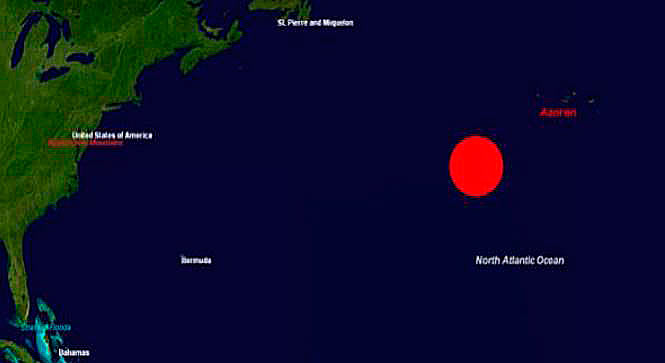
The following month, the Navy released a bit more information, which made its way into a report by the United Press International: «The Navy, still baffled by the mysterious sinking of the nuclear submarine Scorpion, is sending a deep-diving research craft to take special undersea photographs of the wreckage in hopes of uncovering some clue to the disaster. The Navy reported Friday that a seven-man court of inquiry, meeting for 11 weeks and questioning 90 witnesses, found «no evidence of any kind to suggest foul play or sabotage» caused the tragedy that left 99 men dead on the ocean floor. But the Navy also said in summarizing the court’s findings the «evidence now available» does not explain what did cause the Scorpion to sink suddenly last May and come to rest 10 000 feet below the surface. To further the investigation, the Navy announced it had ordered the research craft Trieste II to proceed early this year to the site of the wreckage, about 400 miles southwest of the Azores. The Scorpion…was discovered in October by the research ship Mizar, which photographed her thousands of times with cameras lowered underwater by cable. The Navy released some of those photographs Friday. They showed the submarine’s «sail» or superstructure intact but separated from the hull and lying on its side more than 100 feet from the Scorpion’s bow. The Navy offered no explanation. The pictures have been the basic source of information for Navy officials assigned to the Scorpion case. It was hoped the Trieste, capable of carrying 3 persons at least 12 000 feet beneath the surface, would provide even better photographs».
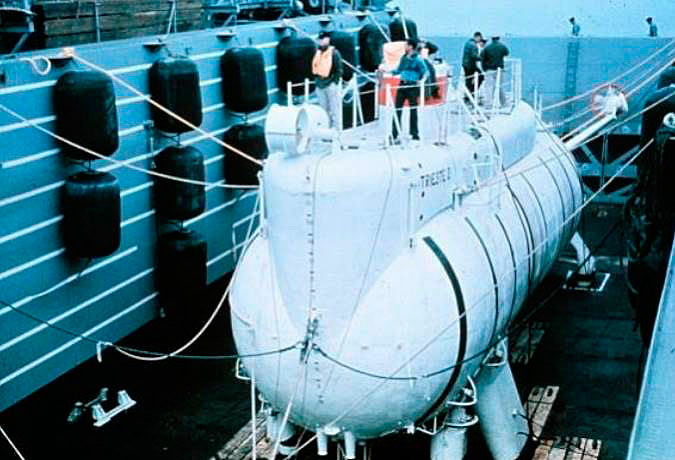
After examining photographs from the Trieste, the Navy issued another report which read, in part, «The most logical location for an internal explosion that would cause the loss of the submarine would be the Torpedo Room. However, the evidence indicates that the Torpedo Room is essentially intact…. It is possible that the explosion of a single weapon could rupture the pressure hull in the keel area, and cause the loss of the submarine – thus, this possibility must be considered. However, experts from NAVORD have stated that the explosion of one weapon would cause sympathetic explosion of others. If more than one weapon exploded there would be extensive damage to the bow section, which would have the appearance of outward deformation. There is no deformation of the nature in any of the visible structure, nor is there deformation to indicate an explosion in a torpedo tube. Internal explosion in the Forward Room is considered unlikely».
While the Navy reports seemed to equivocate on whether one of the Scorpion’s own torpedoes could have exploded and taken down the submarine, it was also difficult for outsiders to theorize what else could have caused the explosion without knowing what other potentially explosive items were on board. Naturally, since it was a state of the art nuclear submarine, the Navy wasn’t exactly in a rush to be forthcoming about the Scorpion’s equipment, which allowed speculation and various theories about the sub’s fate to mushroom. As one naval officer explained, «If a room blows up and there was a hand grenade there, but then I call up and say I took the hand grenade out of the room, you would discount the hand grenade. If I didn’t tell you there were two hand grenades though, if someone was being less than fully truthful, providing less than all of the information, maybe there would be cause to go back and look at it again. Based on the information on file now, the two most likely causes are a ship’s battery explosion and a weapons cook-off. Based on the information we had, I’d say battery explosion. Now there is a good way for a weapon to cook-off. Any information about specific engineering problems in a weapon ought to be tossed into the fore, ought to be discussed».
In fact, more than a decade passed before several secrets about the loss of the Scorpion came to light. Once it came out that there had been an element of secrecy (some would say deception) involved in the sub’s disappearance, the issues surrounding the case began to come back to the surface, with other questions about what else might have been kept from the public. On December 29, 1983, a newspaper in the Navy Academy’s own home town observed, «In a city like Annapolis, military secrets are a fact of life. Sometimes, however, those secrets can cause a great deal of anxiety, especially when it’s unclear why the information was listed secret in the first place. One such case is the sinking of the USS Scorpion submarine in 1968. Only now is information beginning to trickle out on what happened to the sub 16 years ago. «I’ve had a lot of questions over the years», said Judith A. Stephens of Norfolk, Va., whose husband, Lt. Cmdr. Daniel P. Stephens, was killed when the Scorpion sank in the North Atlantic. «And some anger too – mainly because they’ve been so secretive». … Finally, after the government declassified .some documents requested by a Norfolk newspaper under the federal Freedom of Information Act, a possible solution to the mystery has been offered. The Norfolk Virginian-Pilot and The Ledger-Star reported earlier this month that the 99-member crew probably was lost when one of the sub’s own torpedoes accidentally exploded. According to the newspaper, the Navy documents said the crew was attempting to disarm a Mark 37 torpedo that had been activated by a mechanical malfunction. The Scorpion reportedly was executing an emergency 180-degree turn to trigger an «anti-circular honing» device to shut off power to the weapon when it exploded».
It was a good theory, but it certainly wasn’t enough to allay the doubts of everyone familiar with the sub’s doomed fate. As the article pointed out, «Not everyone agrees with that conclusion, however. Cmdr. Alan Konetzni, a former submarine commander who now serves as the Second Battalion officer at the Naval Academy in Annapolis, said the newspaper used «literary license» to draw its conclusion. «The official Navy stand is that it’s still unknown», he said. «It could have been many things». He was in the Pacific in another sub when the Scorpion went down. Konetzni’s sub was ordered to run safety checks on a number of things, he recalled, including its torpedoes. A more advanced torpedo is now carried by U. S. submarines. Mrs. Stephens said she feels the Navy knew the fate of the ship much sooner than it let on to the crew’s families. Authorities must have known it was overdue before the families gathered at the dock, she said. She didn’t even learn the wreck of the Scorpion had been located until Oct. 31 of that year, when underwater photos taken at a depth of two miles appeared in «The Washington Post». … Mrs. Stephens and Konetzni both noted that submarine duty is a hazardous business and that crews know that when they enter. Konetzni said submarine safety is constantly being refined and crew selection and training is a massive undertaking. «We learned a lot from Thrasher», he said, referring to a sub that sunk in 1963 after taking on water. Backup systems have been developed, and life support can be controlled from several areas on a ship, Konetzni said. But it’s difficult to say what was learned from Scorpion’s loss, he said, «The problem with lessons learned», he said, «is without a definite cause they’re hard to pinpoint». Konetzni said he doesn’t agree with the exploding torpedo theory because he hasn’t seen enough data. «I really believe the Navy listed their five or six possibilities and were never able to say for sure which one it was», he said».
It took another nine years, but finally, in 1993, more dreadful information came out. On October 27, the Associated Press reported, «The nuclear attack submarine USS Scorpion, which disappeared in 1968 in one of the Navy’s most gruesome accidents, was probably sunk by one of its own torpedoes, according to newly released Navy documents. The most likely cause of the explosion that killed all 99 men aboard was a scenario in which one of the Scorpion’s torpedoes somehow became armed, according to more than 70 pages of documents the Navy declassified Monday. The crew probably jettisoned the torpedo only to have it swing around and home in on the sub, the Navy documents said. It burst the boat’s bulkheads and plunged it 11 000 feet to the bottom of the Atlantic. The Navy’s former chief scientist, John Craven, said he thinks the non-nuclear torpedo probably exploded inside the submarine itself, the Chicago Tribune reported today. The Navy said it released the documents because it wanted to allay public concerns about the possible radiation leakage from the sub. Officials said little radiation has leaked. The Navy cautioned there still is ‘no incontrovertible proof’ of what happened. The accident occurred at the height of the Cold War, when the U. S. Navy routinely sent nuclear attack submarines to spy on Soviet warships and intercept their communications. But the report may be an answer for relatives of the crewmen, who waited in vain for the sub to dock in Norfolk, Va., on May 27, 1968. The Scorpion was one of only two nuclear subs the United States has lost».
Another article quoted a letter sent from Vice Admiral George W. Emery to the parents of one of those lost, and in the letter he made reference to environmental concerns given that the Scorpion was a nuclear submarine: «After a careful review of all pertinent files and records, the Navy plans to release environmental data and additional details from the Court of Inquiry findings concerning the loss of the USS SCORPION (SSN 589). A final review of this information is in progress, and public release should be made in the very near future. The soon-to-be released information contradicts previously released details on the loss of the submarine, but I wanted to ensure that you were made aware of the potential for renewed media interest. … God bless you and God bless the men of the USS SCORPION».
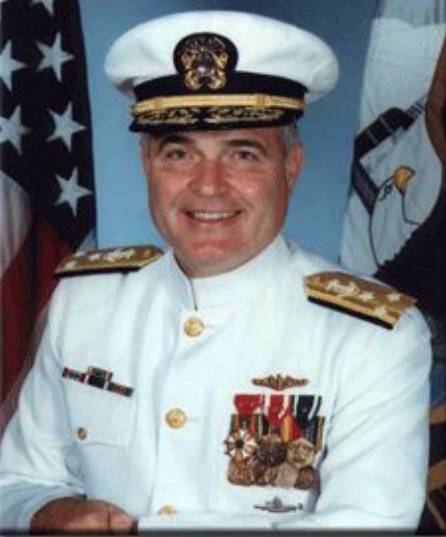
While the Navy gradually released more and more information, the simple truth is that it has never definitively concluded what sank the Scorpion. It officially acknowledged that the «first cataclysmic event was of such magnitude that the only possible conclusion is that a cataclysmic event (explosion) occurred resulting in uncontrolled flooding (most likely the forward compartments)», but there’s still an open debate over what actually caused the cataclysmic event.
Various theories related to the torpedo scenario remain the most widely believed and touted, whether it was an overheated battery causing a fire in the torpedo room or an accidental arming of a torpedo and an attempt to jettison it. However, several books in the past 50 years have proffered other reasonable scenarios. Most, like retired U. S. Navy Rear Admiral Dave Oliver’s Against the Tide: Rickover’s Leadership Principles and the Rise of the Nuclear Navy (2014), continue to believe it was an internal accident (in Oliver’s case, a hydrogen explosion on board).
As horrifying as it is to imagine one of the Scorpion’s own torpedoes inadvertently engaging its own ship, others have envisioned an even worse scenario: one involving a Soviet attack. Given that the Scorpion’s duties involved espionage activities against the Soviets, and the fact that the submarine inexplicably went down just 4 months after the Russian nuclear submarine K-129 mysteriously sank, it’s no surprise that many authors have pointed the finger at the Soviet Union.
Offley is one of the authors who believes the Scorpion was sunk by a Soviet attack, a theory he put forth in Scorpion Down, and All Hands Down by Kenneth Sewell and Jerome Preisler also lay the blame at the feet of the Soviets. According to these theories, the Scorpion found itself in a confrontation while tracking a Soviet flotilla, and the Soviets somehow became alerted to the submarine’s presence.
In the wake of the Cold War, the Russians maintained that they never ordered hostile fire directed at an adversary during the Cold War, but other NATO countries have claimed otherwise, and that on occasion Soviet submarines fired torpedoes at their ships in an effort to scare them off. According to this theory and its proponents, both sides feared an escalation that could lead to further confrontation if the truth came out, and so the Americans and Russians tacitly agreed not to report the full truth about what sent the Scorpion to the bottom of the Atlantic.
Whatever the case, the unresolved disappearance of the nuclear submarine remains one of the most perplexing mysteries in the history of the U. S. Navy, and it doesn’t seem likely to be solved anytime soon.
